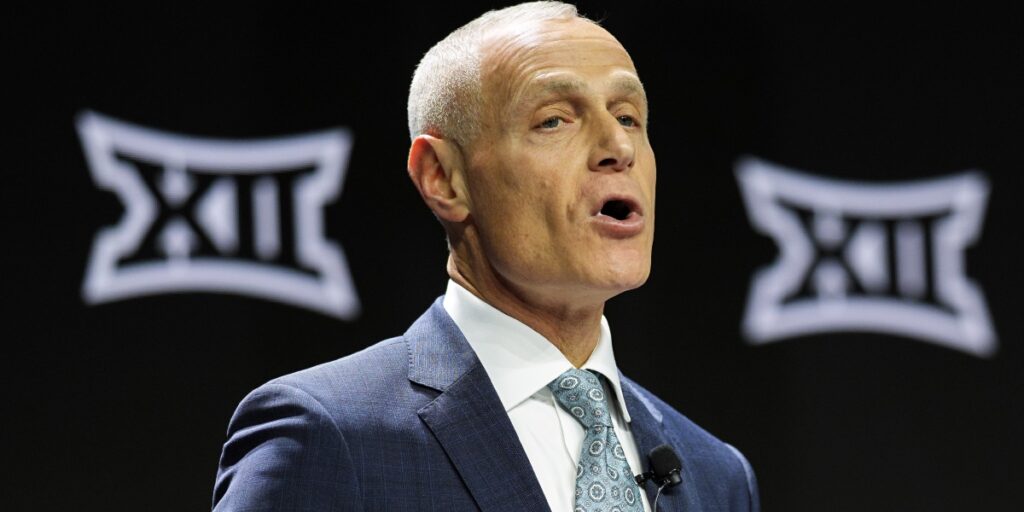With the revenue-sharing era on the way, schools had to make their financial preparations. Once the House v. NCAA settlement received final approval, universities could directly share up to $20.5 million with athletes through revenue-saring.
As schools adjusted their budgets, some opted to cut positions and concern grew about whether some non-revenue sports could be cut. It also led to the idea of a “financial crisis” in college athletics, which is an idea Big 12 commissioner Brett Yormark refuted this week.
Speaking at CNBC and Boardroom’s Game Plan Conference, Yormark sat on a panel alongside ACC commissioner Jim Phillips and Big East commissioner Val Ackerman. While assessing the state of the landscape, Yormark pushed back on the idea of a “crisis” from a financial standpoint as “overly provocative,” pointing out how investment in athletics benefits schools as a whole.
“Our presidents, our boards, our athletic departments, understand that athletics sits at the front porch of all these universities. They recognize that now it drives everything in the ecosystem,” Yormark said, via CNBC’s Alex Sherman. ”[The schools] understand that investing in athletics is the right thing to be doing.”
In preparation for the settlement, schools looked for new revenue streams. Notably, the NCAA paved the way for on-field advertisements last year, and multiple athletics departments have inked sponsorships to do just that.
But private equity is also seen as a potential lifeline, though multiple conferences said they’re not exploring that route. Brett Yormark affirmed that, as well, noting the Big 12 is not pursuing the sale of a stake in the league.
“We’re not going to sell a stake in this conference,” Yormark said. “But do we partner with someone strategically that provides different types of resources, capital, strategic resources? That potentially could happen.”
Jim Phillips: ‘Revenues have never been greater’
Every power conference opted in to the House settlement, meaning schools had to decide how to distribute the $20.5 million. The wide expectation is 75% of those dollars will go toward football and 15% toward men’s basketball. That leaves 5% for women’s basketball and 5% for other sports.
As the settlement takes effect, TV ratings continue to rise across college football and, notably, women’s volleyball. Add in the different revenue streams, and Jim Phillips said revenues – as well as expenses – are increasing. His question, though, was about sustainability.
“Revenues have never been greater,” Phillips said. “Expenses for our schools also continues to go up. Is it sustainable, is really the question.”


